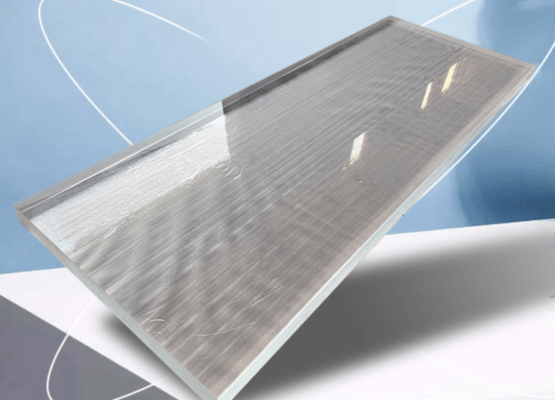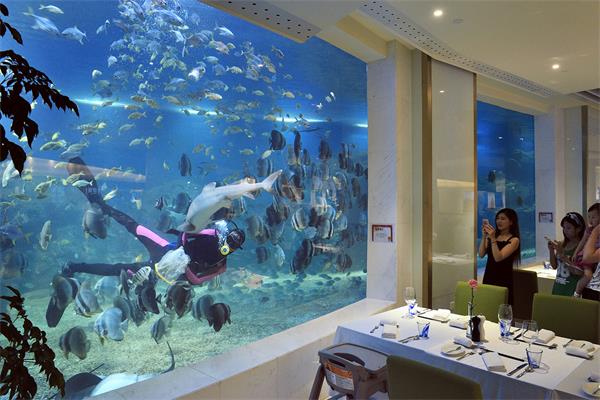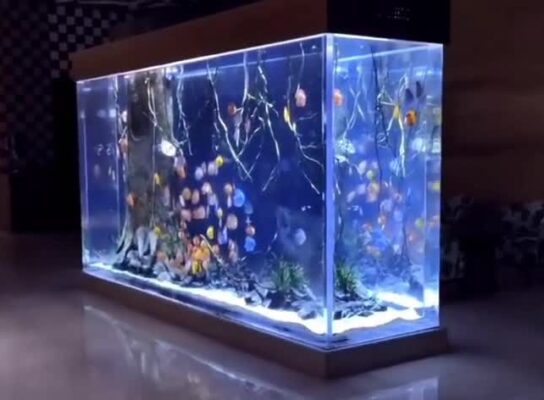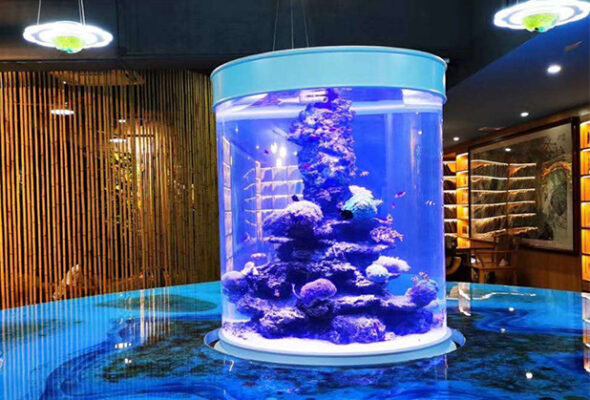Plexiglass vs. Ordinary Glass: Differences, Uses, and Maintenance
Plexiglass, also known as acrylic, is a versatile material widely used in construction, aquariums, and decorative applications. Unlike ordinary glass, plexiglass offers unique advantages such as lightweight design, high durability, and excellent transparency. This article explores the differences between plexiglass and ordinary glass, its applications, and tips for maintaining acrylic fish tanks.
Differences Between Plexiglass and Ordinary Glass
- Anti-Ultraviolet Performance:
Plexiglass contains UV-resistant components, preventing yellowing and degradation from sunlight exposure. - Lightweight:
With a density of 1.16 kg/dm³, plexiglass is half the weight of ordinary glass, making it easier to handle and install. - High Mechanical Strength:
Plexiglass is 7 to 16 times stronger than ordinary glass, with excellent impact resistance. It’s used in bulletproof glass and aircraft canopies. - Ease of Processing:
Plexiglass can be cut, drilled, and molded into various shapes using tools like CNC machines. It can also be bonded with acetone or other adhesives. - Superior Transparency:
Plexiglass maintains high transparency even at thicknesses over 15 cm, unlike ordinary glass, which turns green and becomes less clear.
What is a Fish Tank Acrylic?
Fish tank acrylic offers a seamless design, crystal-clear transparency, and exceptional durability, making it a high-end aquarium product. With a light transmittance of 92%, many call it the “plastic crystal.” Acrylic fish tanks are safer and more aesthetically pleasing than glass tanks, making them ideal for both home and commercial use.
For more on acrylic fish tanks, visit UC Acrylic.
Applications of PMMA Acrylic in Construction
Builders and designers widely use PMMA acrylic in:
- Architectural Lighting: Transparent roofs, canopy roofs, and lighting fixtures.
- Sanitary Ware: Bathtubs, washbasins, and vanities.
- Street Furniture: Advertising light boxes and telephone booths.
Its versatility and durability make it a popular choice for modern construction projects.
How to Maintain an Acrylic Fish Tank
- Cleaning:
- Use a soft cloth or feather duster to remove dust.
- For oil stains, mix water with mild detergent and wipe gently.
- Polishing:
- Apply liquid polishing wax with a soft cloth to maintain shine.
- Repairing Scratches:
- Use a polishing machine with a cloth wheel and liquid polishing wax to buff out minor scratches.
- Fixing Damage:
- For cracks or breaks, use IPS adhesive or methylene chloride glue for repairs.
Benefits of Acrylic Fish Tanks
- Durability:
- Acrylic is 16 times stronger than ordinary glass and resistant to impact.
- Lightweight:
- Half the weight of glass, making it easier to transport and install.
- Customization:
- Manufacturers can mold it into various shapes and sizes to suit different needs.
- Easy Maintenance:
- Resistant to scratches and easy to clean with a soft cloth.
Conclusion
Plexiglass offers numerous advantages over ordinary glass, including lightweight design, high durability, and excellent transparency. Whether for construction or aquariums, acrylic is a versatile and reliable material.
For more information on acrylic fish tanks, visit UC Acrylic.
Contact

Send us an email

Visit Our Shop

Whatsapp & Call
+86 17269314778




